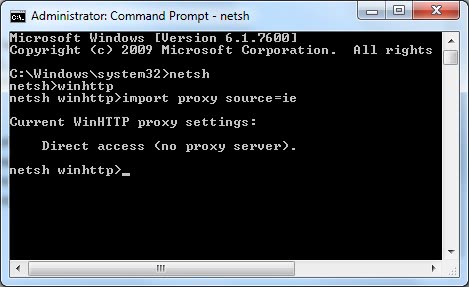A friend’s computer running Windows 7 had been recently infected with the rootkit TDSS which resulted in redirects in all web browsers to affiliate sites. The problem is commonly known as Google redirects and the issue had been fixed back then.
My friend contacted me again after the cleanup asking for help because Windows Update was not working anymore. Whenever Windows Update was used it would run for a long time and display the error 0x80072ee2 in the end without downloading and installing any available updates.
A quick research on the Internet revealed that this error message was related to connection problems to the Windows Update servers.
Suggested fixes included:
- Checking the firewall to make sure that the Windows Update servers were not blocked.
- Checking the hosts file to make sure the Windows Update servers were not redirected
- Testing the connection to the Windows Update servers by downloading a file from it.
- Running the ipconfig /flushdns command in the command line.
- Adding Windows Update servers to the trusted zone in Internet Explorer
- Adding Windows Update servers to the proxy server exception list in Internet Explorer
- Changing the router’s mtu settings
None of these suggestions helped solve the connection problem. Error 0x80072ee2 was displayed after all attempts.
The first thing that one should do when encountering Windows Update errors is to look at the Windowsupdate.log file in the Windows folder. This contains a log that lists all connection attempts, status reports and error messages that are encountered when trying to connect to Windows Update.
My friend’s Windowsupdate.log contained a reference to a proxy server. This was strange because no proxy server was used to connect to the Internet and no proxy server was configured in Internet Explorer.
Turns out that Windows Update uses its own proxy server that is set in the Windows Registry. Here are the steps on how to change the proxy server used to connect to Windows Update (solution for Windows Vista, Windows 7 and newer versions of the Windows operating system including Windows 10).
Open an elevated command line from the start menu. You do that with a tap on the Windows-key, typing cmd.exe, right-clicking on cmd.exe and selecting the run as administrator options. If you like to use the keyboard, hold down Shift and Ctrl before left-clicking on cmd.exe instead.
Enter [netsh], then [winhttp] in the command line so that the screen looks like this afterwards.

Now enter the command [import proxy source=ie]. This will import the proxy settings of Internet Explorer which means either direct access to the Internet without proxy if no server is configured or the proxy server that is used to connect to the Internet.

This should have resolved the connection problems to Windows Update if a proxy server was the problem. Winhttp can also be used to set a specific proxy server by using the [set proxy address] command. A restart of the computer might be needed before the changes are taken into account (or killing the explorer.exe process and reloading it).
If you are interested in all netsh commands available, check out this Technet help document that lists and explains them all.